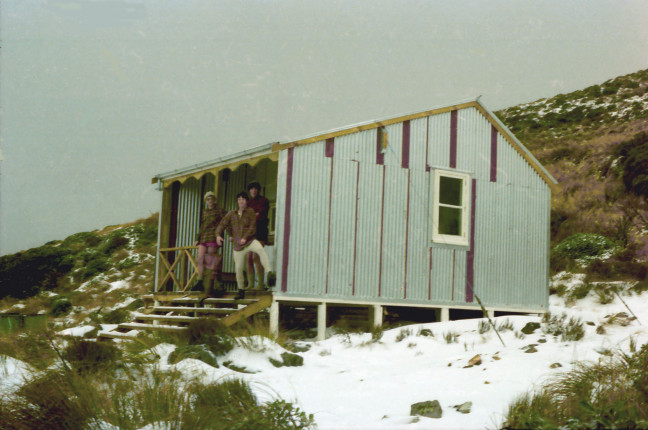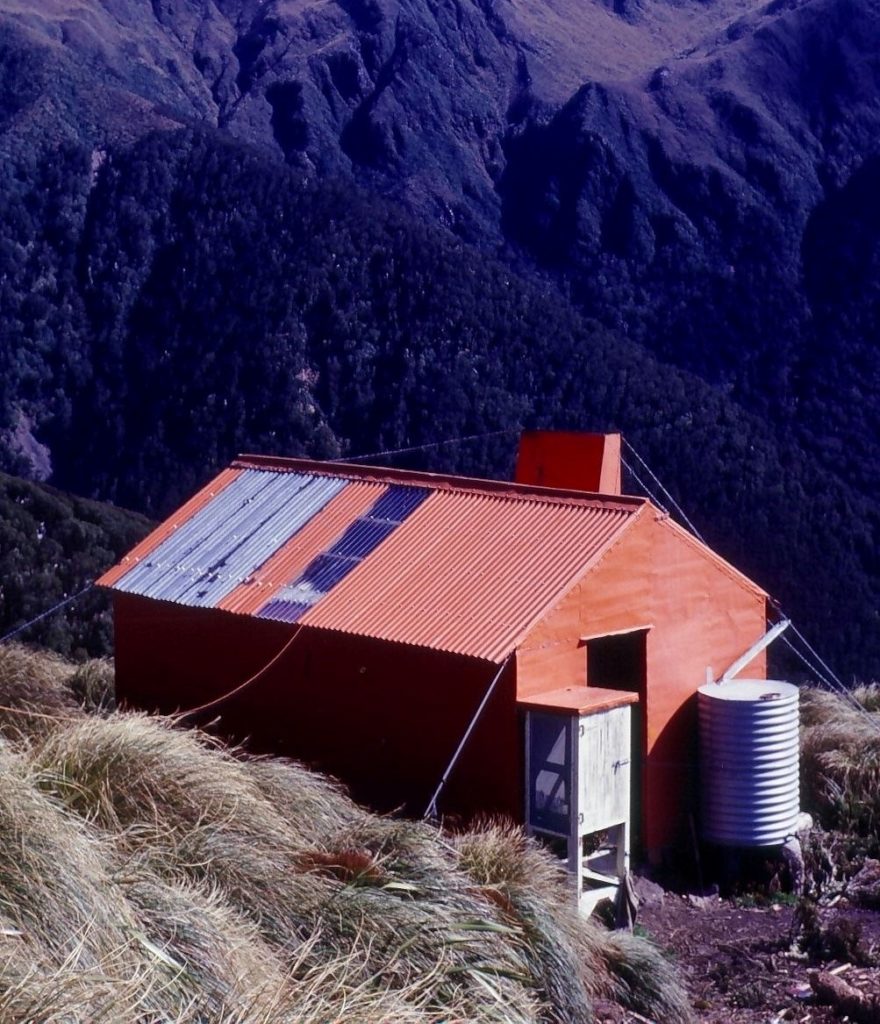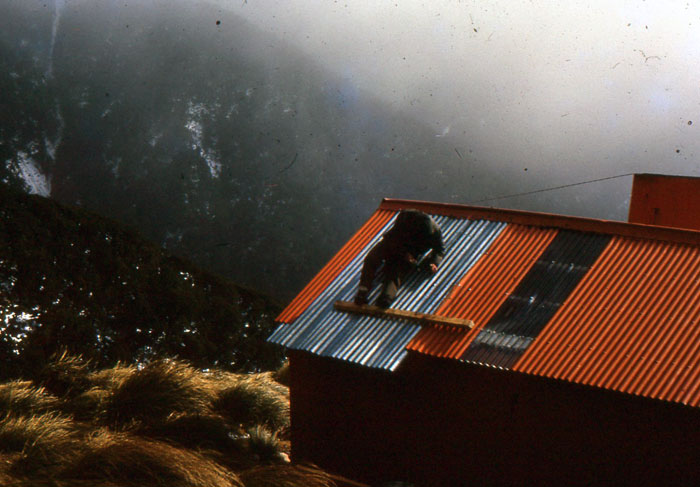Jumbo hut is a 20 bunk hut managed by the Department of Conservation. The hut was built in 1982, the hut was extended in 1992 to increase sleeping capacity to 20. Jumbo hut replaced the old Angle Knob hut located on a spur near Angle Knob. This hut was blown off its foundations in 1980.
The hut Serviced and a booking system applies. Bookings are planned to open in May 2021. Click the link below to find out more about staying at the hut here..
Jumbo hut is located on the popular Powell – Jumbo circuit. This is normally an overnight tramp, or two nights. Trampers heading the Jumbo first, from the Holdsworth roadend usually stay at Jumbo and cross over the open tops to Powell the next day, then on to Holdsworth roadend.
Care needs to be taken when attempting to cross over the open tops to Powell Hut. The main ridge is as exposed to the frequent gale force winds as anywherein the Tararua rang. Attempting this crossing in gale conditions is not reccomended.


Jumbo hut in 1982

Original Angle Knob hut 1967. The hut was built in 1961. (Photo Paul Gush)

Angle Knob hut was subject to high winds and damage had previously occurred to the hut. When the hut was destroyed by wind, the remains were found 200 metres downhill.
Angle Knob – Long lost hut. An extract from Shaun Barnett’s Wilderness Magazine article December 2011
One night in May 1980, Chris Jenkins, a Forest Service deer culler was dossing down in Angle Knob Hut. Back then, Chris was a Forest Service hunter, staying in the six-bunk Forest Service hut, which had been built in the early 1960s. Although the hut site was well known for its wind (when only a year or so old, it had lost a sheet of roof iron), the hut had nevertheless withstood almost 20 years of assault from the worst that Tararua storms could throw at it.
Chris went to sleep in the hut just as the wind picked up. At about 11:30pm he woke when a gust lifted the hut off its piles. A couple of hours later, the chimney started to fall to bits, pots and pans fell off shelves and a jar of tomato chutney smashed, releasing a pungent odour. Jenkins tidied the mess, tried to sleep, but by now it was raining hard, and blowing stronger. Another gust lifted the hut again, the heavy bunks began sliding across the floor, and Chris started to get seriously worried. He decided to get out, but the twisting motion of another gust jammed the door. Fortunately, as the hut resettled, the doorframe straightened, and Jenkins could escape. He spent the night in the long-drop which, situated below the bushline, was much better sheltered. Rarely, I imagine, have toilet facilities been so appreciated. Without going back to the hut, Chris escaped the next day using a culler’s track through the bush into the lower Atiwhakatu. He later surmised that: ‘I suspect that if I had been caught in the hut when it was blown away it probably would have been a few weeks before anyone realised I was missing and came looking for me.’
When he got out, he suggested to his Field Officer that the hut needed checking. Two staff tramped in to assess the hut. To their disbelief, all they found was a water tank and some piles. The could see a hole in the beech forest canopy below and soon located the hut among the trees, where it had come to rest on a flat shelf below a steep bank. Given its relative intactness, the hut almost certainly flew the distance, rather than rolled. Mature beech trees that would have been in the hut’s path (if it had rolled) still remain upright, adding weight to the airborne theory.




